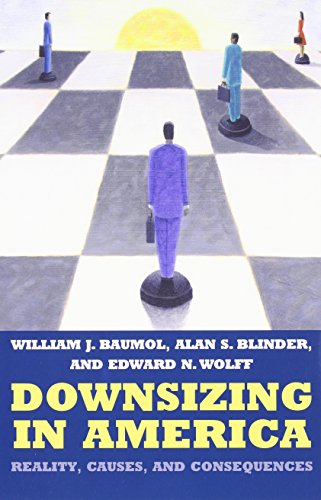Articoli correlati a Downsizing in America: Reality, Causes, And Consequences

Sinossi
In the 1980s and early 1990s, a substantial number of U.S. companies announced major restructuring and downsizing. But we don't know exactly what changes in the U.S. and global economy triggered this phenomenon. Little research has been done on the underlying causes of downsizing. Did companies actually reduce the size of their workforces, or did they simply change the composition of their workforces by firing some kinds of workers and hiring others? Downsizing in America, one of the most comprehensive analyses of the subject to date, confronts all these questions, exploring three main issues: the extent to which firms actually downsized, the factors that triggered changes in firm size, and the consequences of downsizing.The authors show that much of the conventional wisdom regarding the spate of downsizing in the 1980s and 1990s is inaccurate. Nearly half of the large firms that announced major layoffs subsequently increased their workforce by more than 10 percent within two or three years. The only arena in which downsizing predominated appears to be the manufacturing sector-less than 20 percent of the U.S. workforce. Downsizing in America offers a range of compelling hypotheses to account for adoption of downsizing as an accepted business practice. In the short run, many companies experiencing difficulties due to decreased sales, cash flow problems, or declining securities prices reduced their workforces temporarily, expanding them again when business conditions improved. The most significant trigger leading to long-term downsizing was the rapid change in technology. Companies rid themselves of their least skilled workers and subsequently hired employees who were better prepared to work with new technology, which in some sectors reduced the size of firm at which production is most efficient.Baumol, Blinder, and Wolff also reveal what they call the dirty little secret of downsizing: it is profitable in part because it holds down wages. Downsizing in America shows
Le informazioni nella sezione "Riassunto" possono far riferimento a edizioni diverse di questo titolo.
EUR 9,67 per la spedizione da Regno Unito a Italia
Destinazione, tempi e costiCompra nuovo
Visualizza questo articoloEUR 51,04 per la spedizione da U.S.A. a Italia
Destinazione, tempi e costiRisultati della ricerca per Downsizing in America: Reality, Causes, And Consequences
Downsizing in America: Reality, Causes, and Consequences
Da: Anybook.com, Lincoln, Regno Unito
Condizione: Good. This is an ex-library book and may have the usual library/used-book markings inside.This book has soft covers. In good all round condition. Please note the Image in this listing is a stock photo and may not match the covers of the actual item,600grams, ISBN:9780871541383. Codice articolo 5837914
Quantità: 1 disponibili
Downsizing in America : Reality, Causes, and Consequences
Da: Better World Books, Mishawaka, IN, U.S.A.
Condizione: Good. Former library book; may include library markings. Used book that is in clean, average condition without any missing pages. Codice articolo 14409631-6
Quantità: 1 disponibili
Downsizing in America : Reality, Causes, and Consequences
Da: Better World Books, Mishawaka, IN, U.S.A.
Condizione: Good. Used book that is in clean, average condition without any missing pages. Codice articolo 40744277-6
Quantità: 1 disponibili
Downsizing in America : Reality, Causes, and Consequences
Da: Better World Books, Mishawaka, IN, U.S.A.
Condizione: As New. Used book that is in almost brand-new condition. Codice articolo 1094045-6
Quantità: 1 disponibili
Downsizing in America: Reality, Causes, And Consequences
Da: J. HOOD, BOOKSELLERS, ABAA/ILAB, Baldwin City, KS, U.S.A.
Paperback. 321pp. Near new, fresh unused condition, covers bright, text clean & binding tight. Codice articolo 224329
Quantità: 1 disponibili
Downsizing in America: Reality, Causes, and Consequences Format: Paperback
Da: INDOO, Avenel, NJ, U.S.A.
Condizione: New. Brand New. Codice articolo 9780871541383
Quantità: Più di 20 disponibili

